
Modern day living is largely driven by screens. Work, leisure, social interaction, education and communication are all dominated by new technology that places the world just inches from our eyes, but what is the effect of that on our vision?
Research shows just how prevalent the use of digital devices is with 90% of the population in developed countries using smartphones and some users of screen based devices such as laptops and tablets reporting use of up to 15 hours per day. While warnings for limiting screen use have been issued there is little hard scientific evidence to link the use of digital devices to physiological damage to the eyes.
What has been identified is Computer Vision Syndrome (CVS) or Digital Eye Strain (DES) which creates a range of symptoms for users including tired eyes, headaches, blurred vision, dry eye, light sensitivity, poor night vision and irritated eyes.
To find out more about eye care professionals’ (ECPs) understanding of DES and gain a patient perspective Optician and Hoya brought together a group of optical professionals to discuss the topic.
Andy Sanders, who has 35 years’ experience in optics, provides a roundup of the collection of visual problems related to prolonged use of computers, tablets, phones and other screen-based devices. He has worked in a wide range of optical settings, is chair of the FMO standards panel and is the professional services manager for Hoya Lens UK.
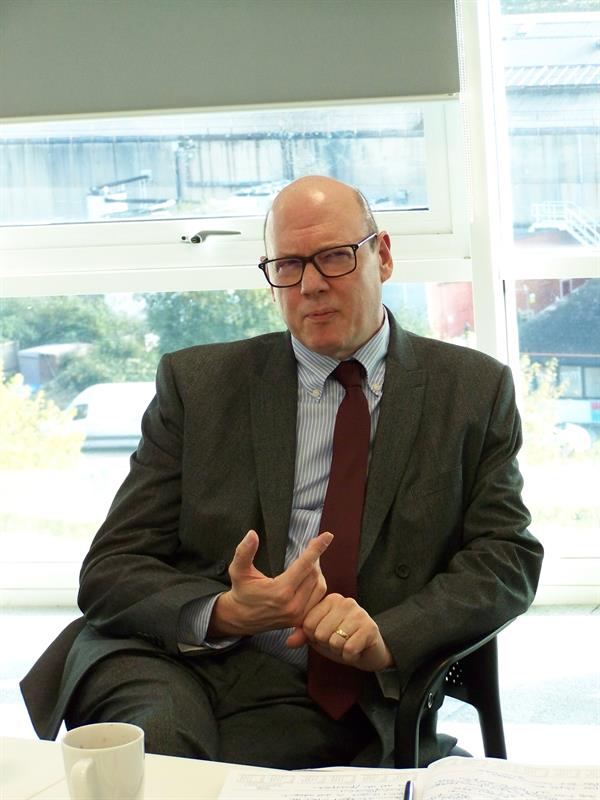 Andy Sanders
Andy Sanders
Updating delegates on the latest research he reveals that 90% of the population are now using smartphones, 70% laptops and 54% tablets. Usage of digital devices continues to increase as does multiple device use. ‘64% of people use a combination of smartphone and laptop, something known to increase DES by 22%’ says Sanders.
‘On average we blink 18 to 20 times per minute, with screen use that reduces down to six to eight blinks per minute. When our eyes dry out, they become more susceptible to blue light and that can exacerbate conditions such as dry eye,’ Sanders says. ‘Blue light focuses in front of the retina and causes poor contrast so potentially the eyes can also try to re-accommodate because we are not getting a nice clear image.’ This physiological effects are made worse by the small size of fonts being read and Sanders explains that some of the common ploys employed by users often result in unnaturally close reading distances. ‘All of these things can contribute to DES.’
The latest figures from the Vision Council of America (VCA) show the amount of time people are spending on devices. Eight in 10 people are using digital media for more than two hours each day, while VCA figures from 2014 show 60% are on social media for five hours a day. Sanders says the trend was toward more screen use with some users already reporting screen use of 15 hours per day.
Understanding the closeness at which users view digital devices and the accommodative strain put on the eyes is important. He asks: ‘What’s the solution? Are we going to bin them?’
Clearly the answer to that question is no. However, with so much data showing the effects of digital device use on vision how is DES manifesting itself in practice and what should ECPs do?
Differing opinions
Opening the discussion is Mike Killpartrick, owner of Ellis and Killpartrick, who has practices in Bath and Cheltenham. He has also held offices within the Association of Independent Optometrists and British Contact Lens Association. ‘Personally I’m a little bit cynical about the eye strain term,’ says Killpartrick. He asks patients about their near vision and when they start to have issues he offers solutions to alleviate the accommodative stress. ‘I don’t really buy digital devices being any different to any other near device.’
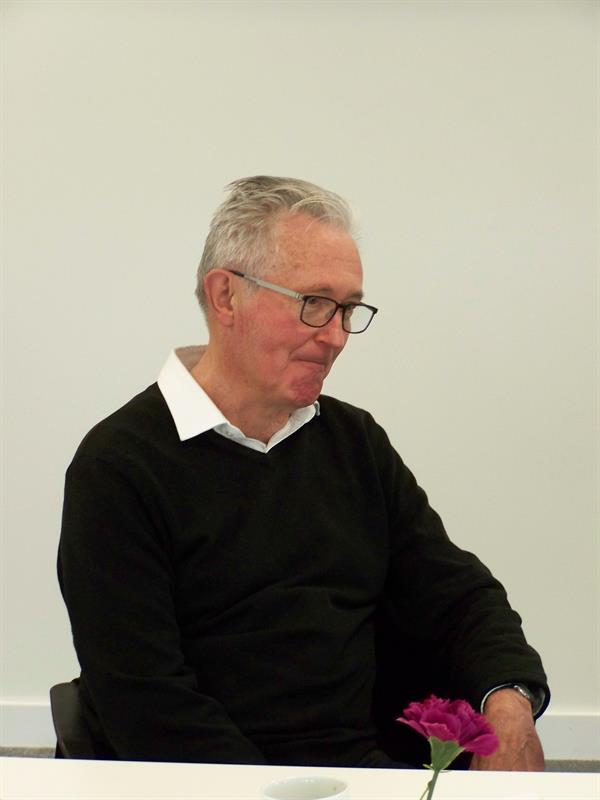 Mike Killpartrick
Mike Killpartrick
Taking a totally different attitude was Michelle Beach, owner and founder of the independent practice Park Vision in Nottingham. She has an interest in sports and school vision and her practice offers high end stylish eyewear. She says discussing DES was a daily occurrence: ‘I think it is a massive epidemic. I see hundreds of professionals and I probably talked about DES three times yesterday.’ She says within her practice, she recently invested £30,000 in a dedicated dry eye clinic.
 Michelle Beach
Michelle Beach
She says patients often do not understand their symptoms, they may be busy professionals working long days on their screen all the time who think they are burnt out. She also makes the point about reading distances: social shifts have seen people move from reading newspapers at arm’s length or laptops from a table to have phones at very close distance. For her this has resulted in dispensing a lot of Workstyle tailored indoor lenses as a second pair and doing a lot of work on prisms with patients on exophorias. ‘It’s huge and it’s on the increase,’ Beach says.
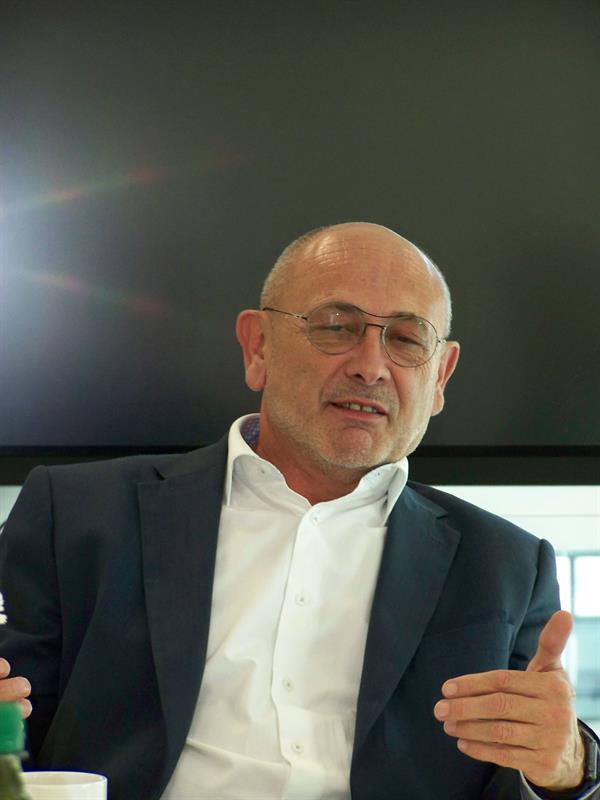 Clive Marchant
Clive Marchant
When it comes to DES among the patient base he says: ‘I don’t think we have made that connection yet, practices still think in terms of near vision correction. We are still not sophisticated enough to recognise these different working distances [for digital devices], we still get the piece of card out and say: “can you read that?”’
With so many factors at play it is difficult not to confuse what is going on, says Killpartrick. If you set aside binocular vision there are two main, but distinctly different elements: accommodative effort and blink rates. ‘I kind of lean more towards blink rates and I think most of the issues in adults come from dryness and blinking.’
Bryony Allen, professional services manager with Leightons Opticians and Hearing Care, manages a team of ECPs across the group’s 30 plus practices. She says the whole issue of comfort lay at the heart of the issue: ‘I see a distinct difference between practitioners considering what people can see versus what people can see comfortably.’ Are we considering if they [patients] are visually comfortable or if they can just see well enough? She returned to the idea of understanding patient needs.’ We are not necessarily wanting, as practitioners, to delve deep enough into that.’ She asked if practitioners had the confidence to recommend products such as low corrections. If they do not have the confidence they will not be making those recommendations.
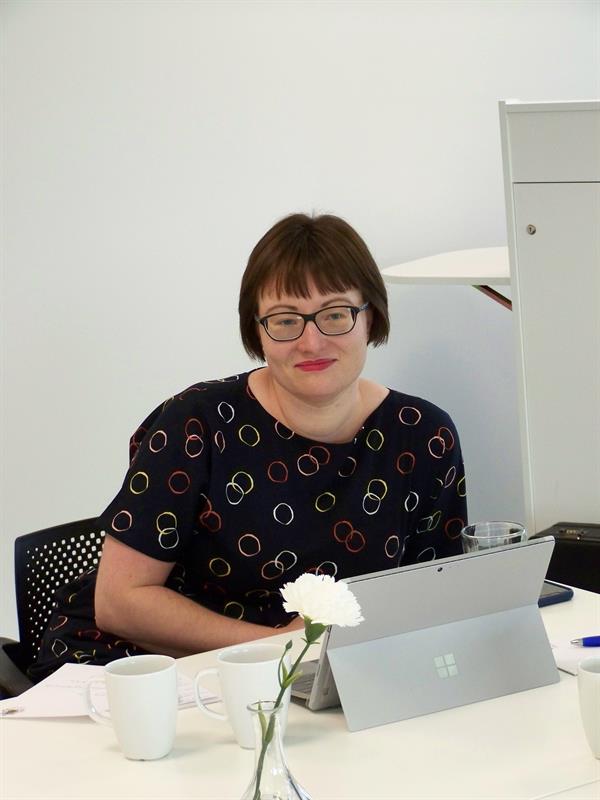 Bryony Allen
Bryony Allen
The chair, Optician editor in chief, Chris Bennett, asks the group if patients are making the connection between visual problems and digital device use?
‘I don’t think they are making that connection,’ says Geraint Griffiths, owner of an independent practice in Leicester with a special interest in sports and school vision and currently chairman of the association of sport and school vision practitioners. ‘As Bryony says, the profession isn’t aware of that connection. What we are dealing with here is the frailty of the human visual system versus technology. The demands of technology, particularly the visual one are overtaking us as a species’. He says there were two factors. The first was the quality of the image technology could provide; the second was up to professionals to assess the individual for factors that were causing DES. He says that meant accommodative effort and muscle balance.
 Geraint Griffiths
Geraint Griffiths
‘The big thing that most dry eye clinics and manufacturers don’t accept is that dry eye comes from visual strain. It’s the muscular effort of the extra-ocular muscles and the ciliary muscle heating the eye, that’s what causes the dryness, blinking is a secondary factor that exacerbates it. All of these dry eye conditions, I think, start with a dry eye, hot, scenario.’
Next generation
The issue of DES was something that the next generation of optometrists needed to be aware of, says Dr Elaine Hallam, a lecturer at Aston University, module lead for ophthalmic optics and previously in practice for 20 years. Echoing comments from Allen and Marchant, she says students will ask questions about lifestyle because ‘they are on the form’, but do not really think about why they are asking them. If a patient mentions they get tired eyes on a computer the student will not always pick it out and work out why, she adds. ‘I found in practice one of the biggest reasons was small uncorrected cyls.’ Griffiths says as little as 0.25 cyl could lead to the eye ‘searching’ for a sharper image and inducing accommodative stress so those low corrections would make perfect sense for some patients.
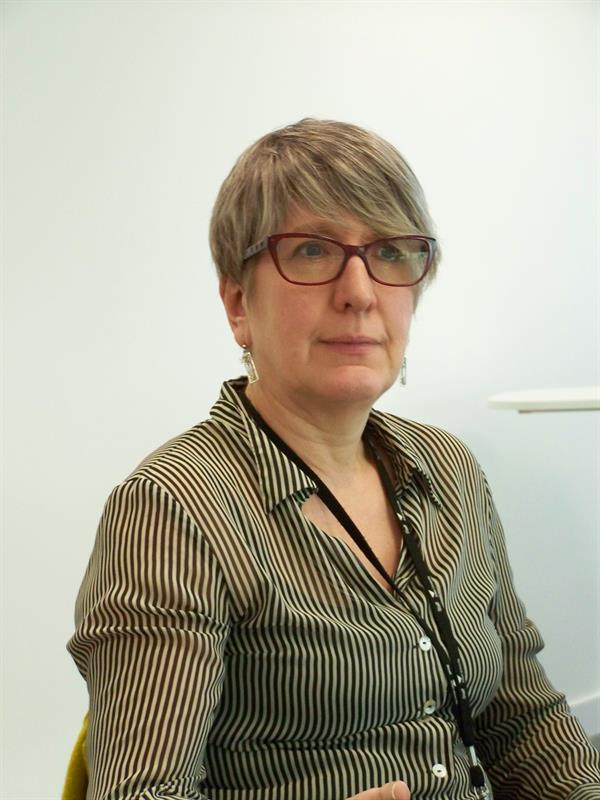 Dr Elaine Hallam
Dr Elaine Hallam
Peter Black, senior lecturer at the University of Central Lancashire, previously with Conlons and Boots and past president of ABDO, says the understanding among practitioners of the issues around DES was not as high as it should be. ‘DES is recognised in law and we have display screen equipment regulations since the 1990s, which I would say are no longer fit for purpose. In those days we had green fonts on a black screen. If I look at my phone I am regularly reading print that is of a much smaller size than we test to. We expect people to read n4 n5 but we are commonly reading n3 n2.5.’
 Peter Black
Peter Black
This is not always the experience, explains Beach who sees a lot of patients with DES. ‘They are all stressed out businessmen. I could tell them to put down their phone but they are not going to do that.’ She says her customers may be business owners and professionals who are on their phones first thing in the morning until late at night. They make that connection but that is their life. ‘It’s a question of having that conversation.’ She uses digital devices within the test environment or even changes places with the patient so they can demonstrate their working distance.
Killpartrick says most people think that using a screen is damaging their eyes and he also sees patients who blame their computer for eye strain. His view is that younger people could be incurring damage but for people over 25 there is little evidence to support that view. He returns to the two factors of accommodative stress or dryness, two very different yet linked factors. He suggests that blink rate was linked to change of fixation and that could be staring at a phone, screen or driving down a motorway. He says the profession was vaguely treating everything – refractive error, accommodative or dryness – without teasing out which one, or ones, is causing discomfort. ‘The fundamental question here is what are we treating as they are very similar yet very distinct things’.
So what strategies can be employed to tease out those factors, asks Bennett? Marchant says understanding what people do outside of work has to be a part of that questioning to really understand the visual needs of the patient. Killpartrick says you cannot preach to patients but with younger patients his practice pushes the 20-20-20 rule. Parents are desperate to find ways of reducing the amount of time their children spend on screens.
Allen stresses distinguishing between devices is very important. ‘When you ask people how much they use their computer, it doesn’t give us the full story. That’s not really what we are interested in, we are thinking about computers, tablets, phones.’ She asks about laptops and tablets but suggests there is much further to go to determine all digital device use.
‘Questionnaires have to be the way to go to understand the plethora of devices people use,’ says Black. ‘How do you watch telly?,’ he asks. For many it will be on their phone.
Black gives the example of a local farmer. ‘His tractor is like the Starship Enterprise, it is full of screens.’ Assuming a farmer works outside and relies on distance vision is outdated.
Griffiths says the profession had to be able to predict who might be affected by measuring the visual system. He alludes to unpublished research which shows the inability to accommodate among children and the variance in accommodative performance and binocular vision among patients. Black agrees that many optometrists don’t measure amplitude of accommodation or binocular vision at near. ‘It’s all about BV now,’ says Beach, ‘not: “can you see 6/5 on the letter chart and n5 on the card”. It’s about lack of accommodation and the eyes working together, checking esophorias, exophorias.’
There seems acceptance around the table that BV was not taught sufficiently well to students and was poorly understood in practice. In an interesting aside, Griffiths makes the point that prism could not be split left and right, and Black suggests DOs were taught precisely to do just that.
Bennett then asks if practitioners should be telling patients how long is safe to spend on a screen?
‘Dictating how much time someone spends on a device is not realistic and it’s not going to happen. You have to flip that around and look at the visual solutions,’ says Marchant. ‘That means all of those things discussed so far, right down to small cyls, binocular vision and amplitude of accommodation to determine the comfortable near point, and ask if a low add lens is going to be a comfortable solution. Having said that there is advice to be given on screen use but you can’t dictate,’ he concludes.
‘I think you would be considered a bit of a dinosaur,’ says Beech. ‘We all know you should go outside and play with a ball more but in the real world patients will agree but carry on as normal.’ Dr Hallam says parents are often grateful when a practitioner offers advice on limiting use even if the kids do not want to hear it. Griffiths says he does not hold back from giving advice. ‘I go all the way but scientifically-justified and demonstrated to the patient.’
‘Our job is to build good relationships with patients,’ says Allen. ‘That means being mindful of how you say things not just what you say.’ ‘To me everything is about giving the patient information and allowing them to make an informed choice,’ adds Black.
Sanders says there are spectacle lenses for pretty much all situations but everything came back to the eye examination and doing all of the necessary tests, including a full range of BV testing. ‘You have got to take everything into consideration in the eye examination and the dispensing because you can make things worse.’
Beach says offering money-back guarantees was a great tool. ‘I have never sent back an occupational lens, ever.’
Black suggests practices look at the business opportunity. ‘We have had occupational lenses for over 20 years, tailor-made lens for over 20 years and we are still not dispensing them in anything like the volume we should be. That’s because we can’t be bothered to explain the benefits to our patients,’ he says.
Dry eye
Returning to the topic of blink rates, Kilpatrick says assumptions about the cause of DES are still being made, explaining that there was too much muddled thinking and you could not just assume a lens will solve DES. The group agrees that more time needs to be spent with patients but that was not always happening. Griffiths suggests the corporate model of eye care was broken and the enhanced eye exam should become the norm. Marchant says laziness and time also played a factor. He says patients experiencing problems blamed the device and did not link visual issues to behaviour.
With so much alarming data coming out of organisations such as the Vision Council of America (VCA) the chair asks if attitudes were changing. Dr Hallam says that VCA data was not being included in undergraduate studies, unlike data on myopia control. Marchant says there is a level of understanding but it came back to expectations in modern life. Black says he did not see that his children using screens was any different from a colouring-in book. Children hold things close regardless of if it is an iPad or a piece of paper. Griffiths suggests that such behaviour was indicative of an accommodative convergence insufficiency, but Black says close working was common among kids.
Bennett asks if ECPs should be giving more solid advice on screen use or face possible legal action down the line? Griffiths says that while there was no science to say digital devices damaged the eyes, it was about finding who was going to find it binocularly comfortable, not telling people how to live their lives.
Offering a gold standard eye examination and not cutting corners has to be the start, says Marchant but lifestyle advice was tricky. ‘We hide behind research or lack of research, we are scared stiff because there is insufficient research.’
Killpartrick says as with so much optical research having a placebo group was not practical. ‘That’s what worries me but so much of it [proposed advice] is not evidence based,’ though he admitts somethings just seem to work.
Black says sometimes assumptions had to be made. ‘If blue light wasn’t an issue why did Samsung and Apple put blue light filters on screens?’ he asks. The chair asks about the role of the professional bodies in leading the profession. If advice to the patient is lacking what advice is the profession getting?
‘I think all of the professional bodes, ABDO included, sit on the fence,’ says Marchant. ‘When it comes to digital eyestrain we are way off the mark.’
‘It’s very difficult for professional bodies to make a statement unless they have strong evidence and the evidence is not there in most cases. When guidance is missing practitioners hate it,’ says Allen.
Marchant says the primary function of clinical audits has to be to ensure standards for optometry are being met so there is a danger that optometrists will tick the boxes to make sure they meet those standards. Beach says having the time to talk to patients meant she could drill down into the detail of how people spend their time but she had experience of working for a multiple. ‘I’ve seen 24 patients in a day and the reason I set up my practice is because I was sick of that.’
But it makes her realise that during those longer conversations gems of information come out. Time is a factor, says Allen, but the focus has to stay on the detail.
Record keeping continues to be important in undergraduate teaching says Dr Hallam and computer usage would feature in that. However, a modern computerised record card does not cater for the level of detail Beach has described, says Marchant because it is a tick box. ‘What Michelle is talking about is a whole record card in the way that if you were going to do a dry eye assessment. That’s what we [the profession] don’t do.’
Cooperation required
All are in agreement that optometrists and DOs working together is a key element. Dr Hallam says lens reps needed to make sure optometrists were included when new products were being explained so they understood what was available. Marchant says the prescription needed to enable the DO to do their job effectively. He stresses that fitting staff with suitable products could help. In one of his practices, an optometrist was dispensed with an occupational lens when it became difficult for him to read his cross cyls. ‘Once he had them the number of pairs being dispensed in the practice shot up because he was totally sold on them.’
Taking that as a cue, the discussion concludes with an opportunity for delegates to describe cases of DES and the solutions provided.
Black describes a patient complaint he, in his role as head of dispensing standards, had to solve. A patient, who happened to be a lawyer, could not read at the distance required. The problem had not been solved by the practice and the patient was threatening to charge the company for all the time he had spent going into practice to sort out the issue at a rate of £400 an hour. Black visited the patient’s workplace only to find a poorly set up workstation offering unusual working distances. The patient also had a large scar on his neck and diminished head movement. Despite being recommended an occupational lens, the patient had opted for a varifocal. Black decided on four options and had them made up at no cost to the patient. An occupational was the winning lens. ‘It was all about the working distance and sometimes you can’t see that in the eye exam, it’s about getting more detail,’ he concludes.
Griffiths gives the example of a doctor going through intensive study on who took naps throughout the day. The patient had a significant exophoria. Griffiths measured fixation disparity at near put the prism in and measured accommodation facility. He says that a slip in the dominant eye was often evident in visual problems. It is that eye which fixes the position on the page or screen, in this case that was what was necessary.
Sanders gives the example of a 17-year-old girl suffering headaches and visual discomfort. Despite a bank of tests there seemed little amiss. She reported symptoms disappeared during school holidays. A low add boost lens was prescribed and the follow up revealed that all was now fine.
Beach reports on a 38-year-old business owner who was working long hours split between the UK and Los Angeles. The patient spent a long time on digital devices, on an aeroplane, and he had self-diagnosed with ready readers. He was not converging properly and had slip with his dominant eye. He was offered an occupation lens with Blue Control and prism. He opted for three pairs: one in each country and one to keep with him because the prescription had transformed his life. It had also cured his dry eye, which Beach suggests was caused by ocular heating because of the visual stress.
Marchant made the point about the accuracy of fit and says customer complaints were often down to poor fitting specs. ‘We talk about the accuracy of the prescription, small cyl, etc, but if the vertex distance or pantoscopic tilt are wrong they are important factors.’ We have to bear in mind that the measurements we take are transferred to the frame both horizontally and vertically.
Dr Hallam brings up the issue of low cyls. This was something she became more comfortable in prescribing when she realised patients found them useful. She tested her own son when he reported headaches and found a +0.50 right and left. He was fitted with a blue blocking lens and his problems went away.
DES is multifactorial and, as digital devices become more prevalent, are an issue which is not going to go away and definitive scientific evidence on the causes of DES is unlikely to emerge. For practitioners understanding the patient’s lifestyle, conducting a thorough eye exam and being armed with a comprehensive range of lenses and dry eye treatments is key to tackling the symptoms.
Panel members
• Andy Sanders, chair of FMO standards panel and professional servies manager for Hoya Lens UK
• Bryony Allen, professional services manager with Leightons Opticians
• Clive Marchant, director of the Colin Lee group and president of ABDO
• Dr Elaine Hallam, lecturer at Aston University
• Geraint Griffiths, practice owner in Leicester and chairman of the association of sport and school vision practitioners
• Michelle Beach, owner and founder of Park Vision in Nottingham
• Mike Killpartrick, owner of Ellis and Killpartrick
• Peter Black, senior lecturer at the University of Central Lancashire
